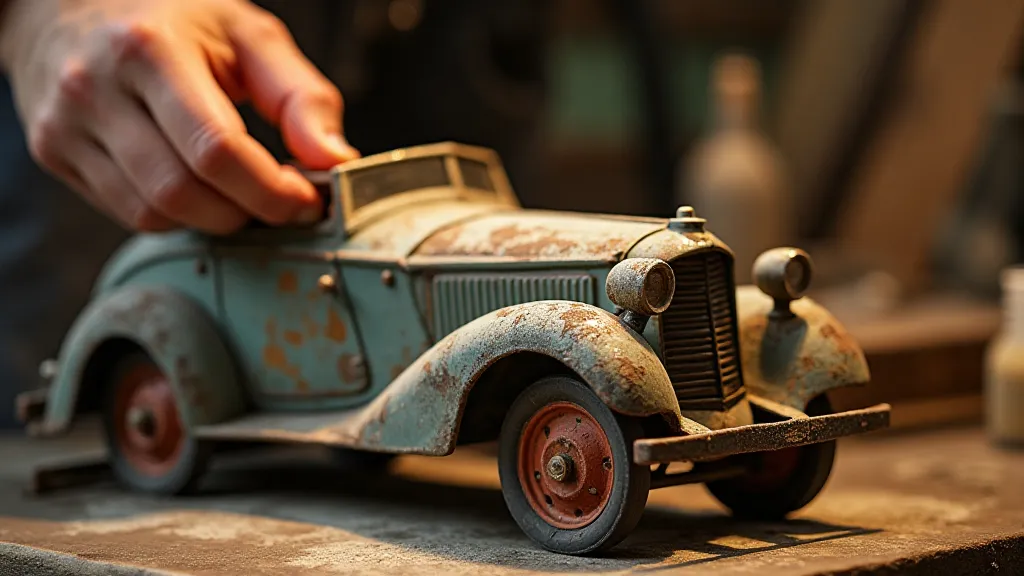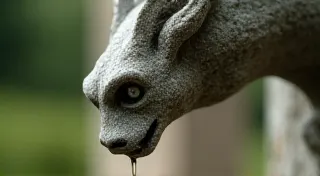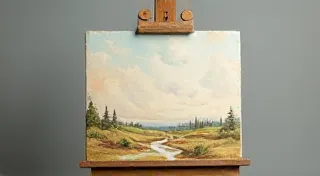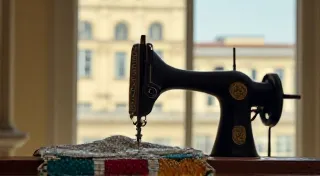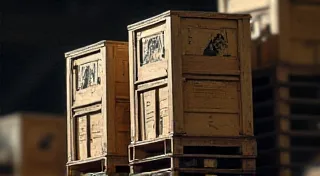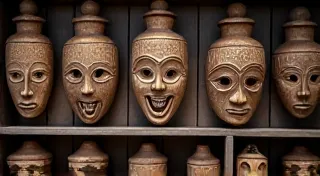The Rust of Memory: How Political Upheaval Shaped Cast Iron Toy Design
The weight of a cast iron horse, a simple rocking steed from the late 1800s, isn't just the feel of metal and paint. It's the echo of a lost era, a time when childhood felt simpler, yet pulsed with the anxieties and aspirations of a rapidly changing world. For those of us who collect these relics, each chip in the paint, each faint discoloration, isn's a flaw – it's a layer of history, a testament to the resilience of play and the enduring power of imagination. To truly appreciate these treasures, we must understand how significant political and economic upheavals shaped their design and production.
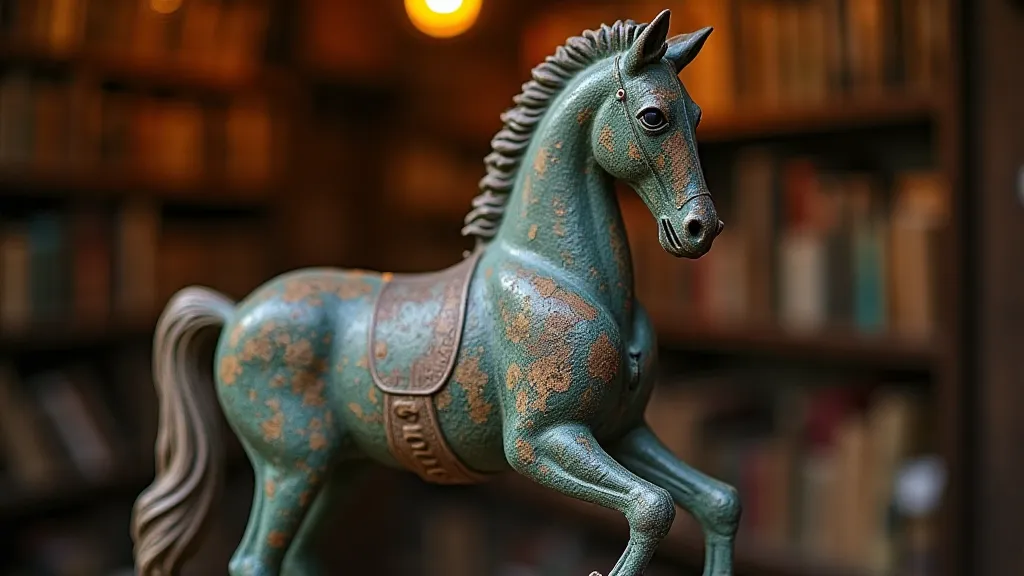
The Gilded Age and the Rise of Mass Production
The late 19th century, often called the Gilded Age, saw an explosion of industrial growth in America. Fortunes were made and lost with dizzying speed. This unprecedented wealth fueled a desire for novelty and entertainment, particularly for children. Before this era, toys were largely handmade, often wooden or made of cloth. They were expensive and accessible only to the elite. The rise of mechanized production – enabled by advancements in casting and metalworking – changed all that. Suddenly, cast iron toys became within reach of the burgeoning middle class.
Early cast iron toys were often imitations of real-life vehicles: fire engines, carriages, and farm equipment. Companies like J.C. Stevens, Kenton, and Wolverine quickly established themselves as leading manufacturers. The aesthetic was driven by realism, reflecting the era’s fascination with machines and the rapidly expanding transportation networks. These toys weren’t just entertainment; they were miniature representations of the world children would one day inherit.
The Shadow of War: Patriotic Toys and a Shifting Landscape
The outbreak of World War I in 1914 brought a stark contrast to the optimistic outlook of the Gilded Age. Patriotism became a dominant theme in American culture, and it inevitably permeated the toy industry. Manufacturers churned out cast iron soldiers, tanks (based on the emerging military technology), and patriotic vehicles emblazoned with flags and eagles. While they served as playtime diversions, these toys also subtly instilled a sense of duty and national pride in young children.
The war also had a profound effect on production. The demand for metal shifted dramatically toward wartime supplies. Raw materials became scarce, and labor was redirected. This led to a decline in the quality and quantity of cast iron toys. Designs became simpler, often sacrificing the intricate detailing that characterized the pre-war era. The vibrant colors often faded to more muted tones due to material shortages.
The Roaring Twenties: A Moment of Frivolity and Art Deco Influence
The post-war era – the Roaring Twenties – saw a brief return to a sense of carefree indulgence. The toy industry responded with brighter, more playful designs. Cast iron cars and trucks became incredibly popular, reflecting the widespread adoption of automobiles. Art Deco’s streamlined aesthetics began to influence toy design, resulting in more angular, geometric forms. The toys of this decade seemed to embody the optimism and exuberance of the age. My grandfather, a young boy in the 1920s, would tell stories of spending hours pushing his cast iron truck across the dirt roads, dreaming of becoming a driver.
However, this period of prosperity proved to be fleeting. The stock market crash of 1929 ushered in the Great Depression, casting a long shadow over the nation and its children.
The Great Depression: A Time of Austerity and Simplified Designs
The Depression profoundly impacted the toy industry. Families struggled to afford even basic necessities, and luxury items like cast iron toys became a distant dream for many. Manufacturers responded by producing simpler, less elaborate toys, using less paint and opting for more economical casting methods. The vibrant colors characteristic of the 1920s were replaced with darker, more subdued tones. Even the materials used were cheaper, impacting durability. Many companies were forced to close their doors.
The toys produced during this era serve as poignant reminders of a time of hardship and resilience. They are a testament to the enduring human need for play, even in the face of adversity. There’s a quiet dignity to these toys, a sense of practicality born out of necessity.
World War II and the Post-War Boom: A Shift in Materials and New Designs
World War II brought another wave of material shortages and production shifts. Cast iron was deemed essential for the war effort, effectively halting its use in toy manufacturing. Toymakers switched to materials like pressed steel, which was more readily available. While pressed steel toys had their own charm, they lacked the heft and durability of their cast iron predecessors. They also often felt… less substantial.
The post-war boom brought a resurgence in consumer spending, and cast iron toys briefly returned to production. However, the rise of plastic toys, which were cheaper to produce and lighter to ship, gradually eclipsed cast iron. By the 1960s, most American manufacturers had ceased production, marking the end of an era.
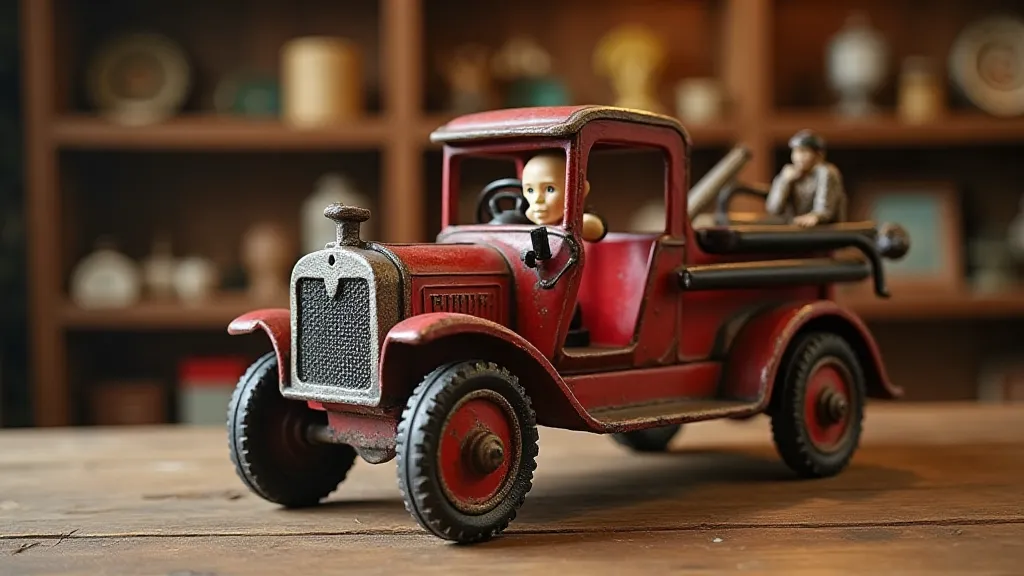
Collecting and Preserving the Past
Today, cast iron toys are prized by collectors for their historical significance, craftsmanship, and aesthetic appeal. They offer a tangible link to a bygone era, allowing us to connect with the children who played with them and the families who cherished them. The rust on a toy isn's a sign of neglect; it’s a marker of time, a badge of honor earned through decades of play and preservation.
Restoring these toys can be a rewarding experience, but it’s crucial to approach it with respect for their history. Over-restoration can erase the subtle nuances that tell their story. Cleaning gently, stabilizing any fragile paint, and applying a protective sealant can help preserve these treasures for future generations.
Each cast iron toy is more than just a plaything; it’s a vessel of memory, a miniature monument to a time when imagination reigned supreme, and the world felt both simpler and more wondrous. Understanding the historical context surrounding these toys deepens our appreciation for their artistry and their enduring legacy.
